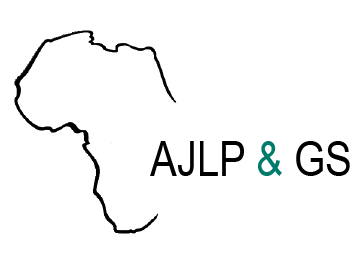The present structure of polling units was created in 1996 by the defunct National Electoral Commission of Nigeria (NECON), which created 120,000 polling units and 8,809 wards (Registration Areas) to serve the purpose of registration center and voting exercise.Goal and Objectives:The aim of the…
As a land use management system, agroforestry has environmental, economic and societal benefits over conventional agriculture or forestry. Important benefits of combining tree growth with agricultural crops and/or forage production systems include higher biodiversity through more diverse…
The growing and multiple interests in land as a resource has led to an increase in locally or regionally clashing land use interests on agricultural land which may result in conflicts or open up possibilities for synergies. Urbanization, food production, renewable energy production,…
There exists no single optimal way for transporting hydrogen and other hydrogen carriers from one port to the other globally. Its delivery depends on several factors such as the quantity, distance, economics, and the availability of the required infrastructure for its transportation. Europe has…
There exists no single optimal way for transporting hydrogen and other hydrogen carriers from one port to the other globally. Its delivery depends on several factors such as the quantity, distance, economics, and the availability of the required infrastructure for its transportation. Europe has…
Panorama solutions on Sustainable Rangeland Management (SRM) toolkit which is tested in North Africa and West Asia (NAWA region), with a specific focus on Tunisia, Jordan and Uzbekistan, and offers a package of holistic and multi-disciplinary tools for addressing the root cause of rangeland…
For over a decade, rural Lao households have been undergoing a transformation from subsistence-oriented production systems to agricultural commercialization, facilitated by a series of Lao government policies opening the economy to international markets coupled with improved connectivity. The…
For the 1.5 billion people living in Fragile and Conflict Affected Settings (FCAs), livelihood challenges and rising food, fertiliser, and input prices are compounded by climate change, unsustainable resource consumption, poor governance, and weak social cohesion . Economic disruptions, such as…
Biophysical models are key to inform management activities that can restore degraded soils and ultimately improve biomass production and soil organic carbon (SOC) sequestration. Within East Africa several studies have been conducted to evaluate models in annual cropping systems, and to quantify…
This study analyses the impact of high-quality nutritional grasses in feeding on beef cattle in farms from Córdoba Department, Colombia. The low productivity and high environmental impact associated with beef farming in the region make it necessary to implement sustainable intensification…
In Colombia, milk yield gaps among dairy systems are large and farms with better feed quality and sustainable cattle management practices are more productive. Cattle farming is responsible for about 15% of the Colombian greenhouse gas emissions (GHGE), therefore, sustainable mitigation…
The Orinoquia region in Colombia is home to diverse ecosystems, including forests and various agroecological zones, but extensive cattle ranching poses a significant challenge as it contributes to deforestation and threatens the region's valuable forest resources. To address this issue,…







